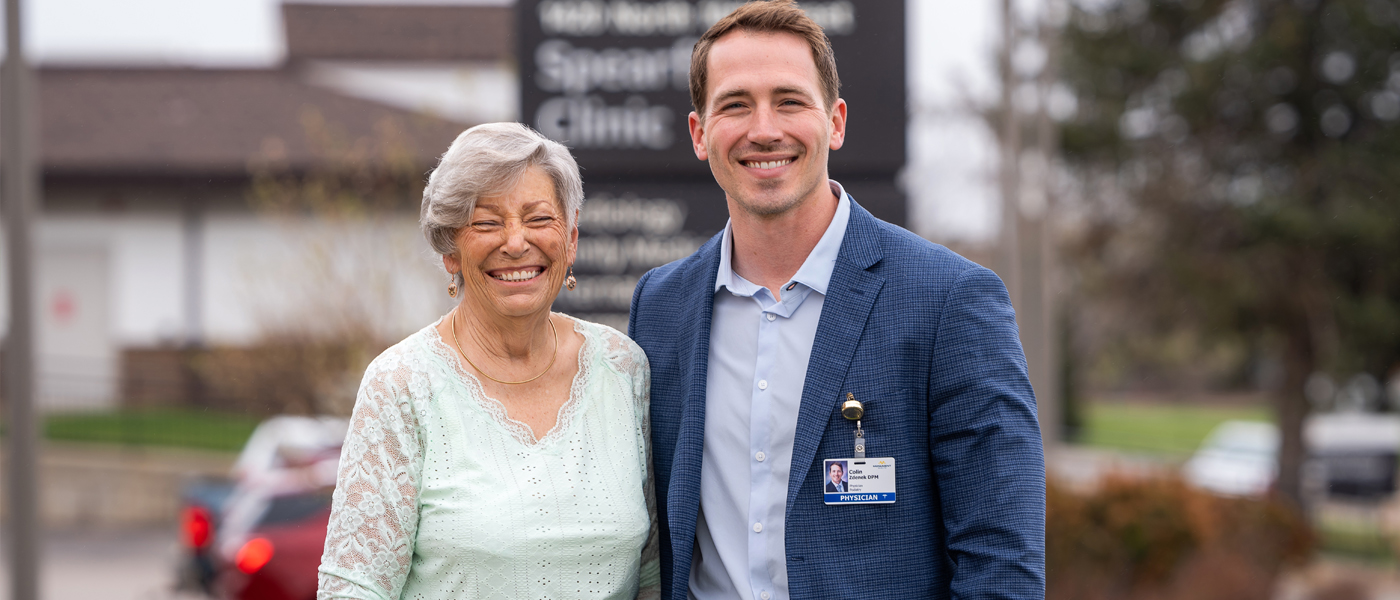The tiny town of Faith, South Dakota, is perhaps best known as the location of the discovery of the most complete Tyrannosaurus Rex skeleton yet found, nicknamed Sue. But there is still one tough, old bird who is bound and determined not to end up as just another fossil.
June Kilby is well aware of the benefits of a restoration. After all, in her spare time she renovates and flips trailer homes in Faith. The 78 year old prefers to stay busy and she’s always on her feet, even when it meant ignoring debilitating pain in her ankle.
“Well, I actually retired three times. It lasted about six weeks. I didn’t like it,” June said. So, she unretired and taught school for three years, then moved on to road construction. Finally, June settled on a full-time job as a waitress and bartender. “And that’s what I still do today.”
Fusion refusal
Just a short six months ago, the pain in June’s ankle was starting to take its toll on her ability to stay active. “My ankle has had a lot of trauma. It was broken once, and I was born with kind of a goofy joint. I reached a point where it was just, ‘Oh my goodness. I need to have somebody look at this.’”
June scheduled a consultation with podiatrist Colin Zdenek, DPM, FACFAS, one of the newer physicians at Monument Health Spearfish Clinic. With extensive training from his Silicon Valley Reconstructive Foot and Ankle Fellowship, Dr. Zdenek’s surgical expertise covers a wide range of foot and ankle deformities, including chronic ankle instability, tendon injuries, flatfoot and high arched reconstructive surgery, bunion and hammertoe correction, and the list goes on.
Upon examining June, Dr. Zdenek discovered that she had developed chronic ankle arthritis, which was likely exacerbated by the previous injury to her ankle. “She had a difficult time getting through her shift on a daily basis. She was unable to perform her usual activities without pain or discomfort,” Dr. Zdenek said.
June could either slow down and learn to live with the pain, or undergo surgery to alleviate her suffering once and for all.

Dr. Zdenek proposed two surgical options: an ankle fusion — a surgical procedure where bones are compressed together to reduce inflammation and pain — or a total ankle replacement, also called an arthroplasty. June elected to undergo the total ankle replacement, because an ankle fusion would have meant an extensive recovery time with no activity. For June, that meant there would be a lot of sitting around, which would have been unbearable.
Dr. Zdenek agreed with June’s decision: “Total ankle replacements are a great alternative to an ankle fusion because patients can begin weight bearing at a much earlier date.”
A burning desire
In an ankle arthroplasty, damaged organic parts of the ankle are replaced with inorganic material like plastic, steel or even ceramics. Dr. Zdenek obtained a three-dimensional CT scan of June’s ankle, which was then sent to engineers so they could create a cutting guide system specifically for June’s ankle.
“A 3D printed model is sent to my office so that June was able to visually see how the implant would be placed,” he said.
June was relieved that Dr. Zdenek made sure that she absolutely understood what the procedure was, why he was doing it and how he was to perform it. “And from somebody that doesn’t like a hole poked in them, that was so comforting to know that I wasn’t going to be held up, because we live in the country and I do a lot of country things. Can’t be tethered,” she said.
June said she hardly noticed any discomfort during the recovery because she was so accustomed to the pain from her former injuries. In fact, the hardest part was sitting still in her recliner. “I think I was in that chair for about two and a half months,” said June. She fantasized about ridding herself of the memory — and the recliner — via symbolic ceremony. “I’m burning it in the driveway and getting a new one!”
Recliner declining
Six months after the ankle replacement procedure, June credited Dr. Zdenek and the ankle arthroplasty for restoring her to her full activity levels. Her ankle has felt so good that she has started planning to build a greenhouse by hand from scrap pallets; a project which she said she never would have been able to undertake before the procedure. As for the fate of June’s recliner, she may have to make other plans. “My husband won’t let me burn it in the driveway,” she said with a laugh. “He’s like, ‘Why don’t you just sit down and read a book?’”

